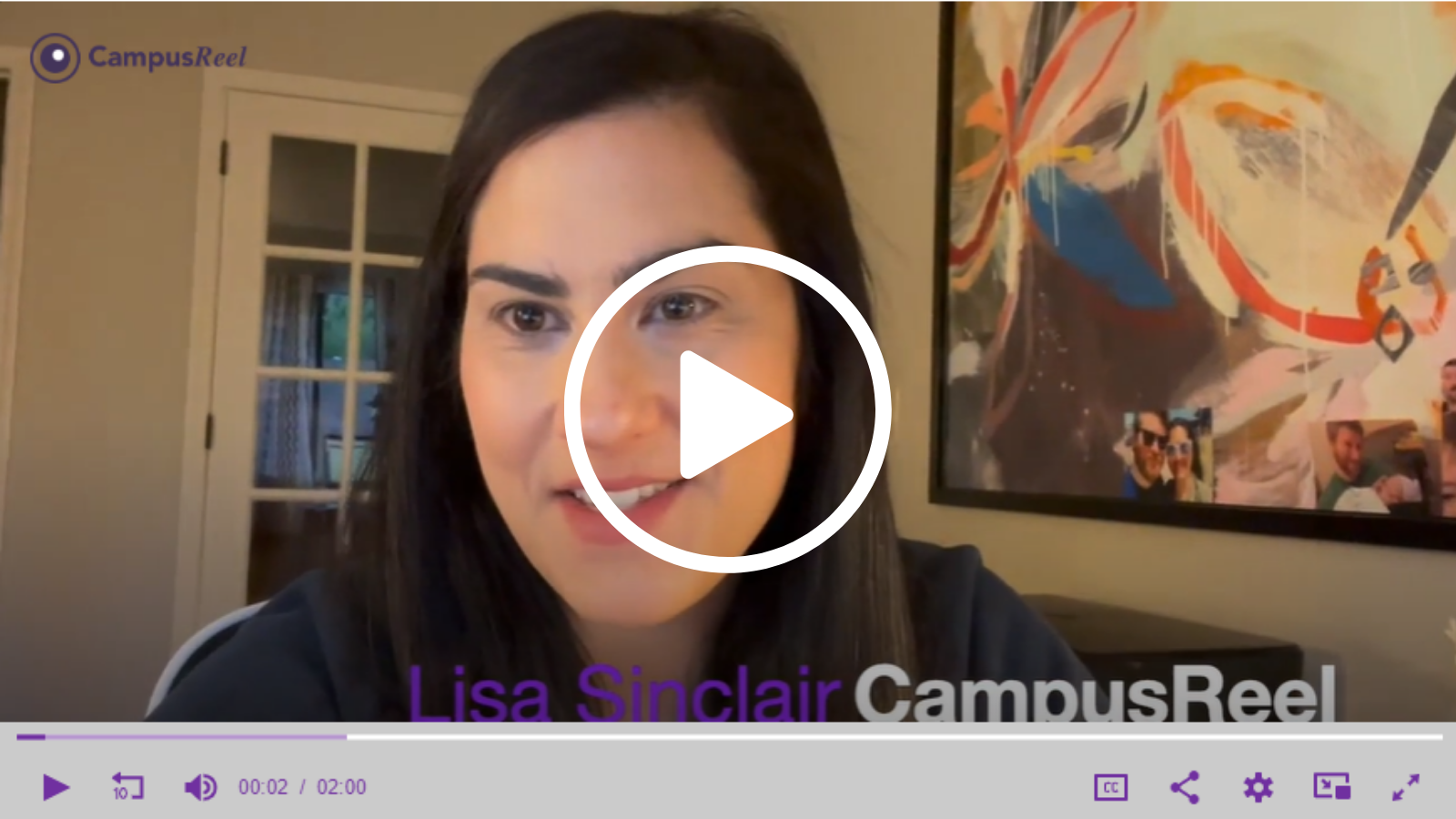By: Lisa Sinclair, Director of Customer Success, CampusReel
Do you believe in your product enough to trust your students to sell your experience? It should shock no one that one of higher education’s biggest challenges is creating authentic connections in the digital world. Changes in how we communicate
on the internet are happening at light speed, and higher ed is notoriously slow to keep up. Today, if a message feels canned or scripted or “Sponsored,” it’s a hard pass from Gen Z. That’s why successful brands have turned
to influencer marketing. In modern marketing, you seldom hear from the company itself; you hear from its current customers. Customers sell to other customers. And it should be no different when marketing your college.
You’re selling an expensive product. But “college” is not just a product – it’s an experience. It’s personal growth. Broader horizons. The chance to participate in a careful yet radical transformation from child to
adult. Who better to talk about this intensely personal experience than those actually living it?

Lisa’s UCLA Story: Share The Pros and The Cons
Step 1: Closing the deal and applying business principles to “selling” your school.
Make peace with the fact that you’re selling a product.
Crude though it may seem, attending your school is ultimately a purchasing decision. Therefore, reframing the conversation and admitting that enrolling a student is not unlike closing a sale can be helpful.
Such a personal decision requires a personal approach to making the sale, but you can’t send an ambassador, or even a fruit basket, to every student’s living room. So how do you get into their homes and conversations and ultimately win their
hearts and minds?
Take yourself out of the equation.
Leave it to your current students to share your message, build connections, and engage with their future classmates.
Step 2: Be authentic.
None of this works without a healthy dose of authenticity. But unfortunately, it’s too easy to disregard the person toeing the company line as a gun-for-hire spokesperson.
If your institution believes so wholeheartedly in the value of the experience you provide that you’re willing to give control of the message to your current customers, that speaks volumes to the viewer.
In the immortal words of LeVar Burton,
“Don’t take my word for it.”
Step 3: Connecting with diverse prospects requires diverse content.
Prospective students want to see and feel connected to someone from a similar background to theirs. Two cookie-cutter promo videos on your website won’t build that personal connection.
One of the historical drawbacks of video content has been the high production cost, lengthy timelines, and overly curated message. It takes too long and costs too much, and all you get in the end is one or two “rah-rah” videos.
The one-size-fits-all approach to video marketing has become passé, along with the old video production model. The value of a video is in what it does for the viewer, and the primary goal of any video should be to build trust and create a connection.
This is only possible for a broad audience by diversifying the faces and stories captured on video. You know who your ideal customers are because you already have them. Attract the right-fit students with content that represents them: their background,
experiences, and educational goals.
Step 4: Fire the brand police, and take some risks.
Okay, perhaps that’s a bridge too far; no one needs to get fired. But at the very least, let go of perfectionism, editing the minutiae, and hyper-controlled branding. Stop trying to curate the message, and let your students talk about the cons along
with the pros. Guess what? By sharing the cons, the prospect is more likely to believe the pros.
Allow for nuance, and let your future students assess the information themselves. There might be good in the so-called bad. Showcasing raw, authentic stories will attract students who are more likely to be a good “fit” and successful once
they show up on campus because they have realistic expectations of the experience.
Step 5: Leverage video throughout the entire recruitment funnel.
Once you buy into the need for current students to share their authentic experiences and start building a library of diverse content for prospective students
to connect with, it’s time to put the videos to work to hit your enrollment goals.
Distribute the videos: Add your video content to all of your college’s profiles on college search networks. This can 10x your video views and build strong brand awareness while students are still in the research and discovery phase.
Add to your website: Make it easy for students to find your videos on your most valuable marketing asset: your website. Once students have some interest, they will start browsing your website. If they don’t see content that helps them feel
connected to your experience, they will bounce.
Eliminate stealth: Conversion rate optimization means turning anonymous video viewers into high-intent inquiries and applicants. To do that, you’ll need to leverage technology that can convert viewers into inquiries and integrate with your
CRM.
Improve yield: The video conversion data will give you valuable insights into a prospect's interest. Improve yield by leveraging video content in all of your personalized outreach. Using video in your yield strategies can achieve inquiry-to-deposit
conversion rates above 9% (University of Vermont Case Study).
Conclusion
Your current students are your best brand ambassadors. So give up some control, and trust them with the truth about their experience. Let them share the good and the bad. It will only serve your audience to know precisely what they’re buying.
In the world of video, volume is your friend. Open the floodgates on student-generated content. Create real connections by sharing authentic stories representing your student body and attracting the students most likely to succeed on your campus.
If you believe in your product (your college experience), it’s time to trust your students to sell it by sharing their raw, unfiltered stories. Fortune favors the bold.